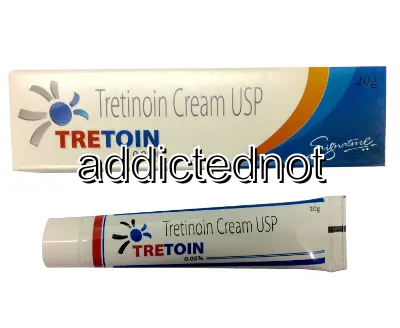Buy Tretinoin Online in Ireland
| Package | Dosage | Price | Price per Dose | |
|---|---|---|---|---|
| Dosage: 0.1% | ||||
| 5 tube | 0.1% | €143.98 | €28.80 | |
| 4 tube | 0.1% | €126.70 | €31.68 | |
| 3 tube | 0.1% | €112.30 | €37.44 | |
| 2 tube | 0.1% | €83.50 | €41.76 | |
| 1 tube | 0.1% | €50.38 | €50.38 | |

Tretinoin Description
What is Tretinoin?
Tretinoin, also known as all-trans retinoic acid, is a derivative of vitamin A. It is widely used in dermatology for its powerful effects on skin renewal and acne treatment. This medication is available in various forms, including creams, gels, and liquids, designed to be applied directly to the skin. Its primary function is to promote cell turnover, helping to unclog pores and reduce the formation of acne lesions. Over the years, tretinoin has gained recognition for its ability to improve skin texture, diminish fine lines, and even out skin tone. Due to its efficacy, it is a common choice for both acne management and anti-aging routines.
How Does Tretinoin Work?
Tretinoin works by influencing the growth and differentiation of skin cells. When applied topically, it penetrates the skin and interacts with cell receptors, stimulating faster shedding of dead skin cells. This process prevents the buildup of debris within hair follicles, which is a primary cause of acne formation. At the same time, tretinoin encourages the production of new, healthy skin cells. Its ability to boost collagen production also contributes to skin firmness and elasticity. This dual action makes tretinoin not only effective for clearing acne but also beneficial for reducing signs of skin aging.
Advantages and Benefits
One of the main advantages of tretinoin is its proven effectiveness in reducing inflammatory acne lesions. Patients often see noticeable improvements within a few weeks of consistent use. Besides acne treatment, tretinoin is praised for its anti-aging properties. It can help diminish the appearance of fine lines, wrinkles, and age spots. Many users report smoother, more even skin texture after several months of therapy. Additionally, tretinoin can help improve skin pigmentation issues, promoting a brighter complexion. Because of these multiple benefits, it is a cornerstone ingredient in many dermatological products aimed at skin renewal and rejuvenation.
Possible Side Effects and Precautions
Despite its benefits, tretinoin can cause side effects, especially during the initial treatment phase. Common reactions include skin redness, dryness, peeling, and increased sensitivity to sunlight. These effects are usually temporary and subside as the skin adjusts. It is important to use a broad-spectrum sunscreen daily to protect the skin and minimize irritation. Some users may experience skin irritation or allergic reactions; therefore, it is recommended to start with a lower concentration and follow healthcare professional guidance. Pregnant and breastfeeding women should consult their doctor before using tretinoin, as it is not recommended during pregnancy due to potential risks to the fetus. Proper skin hydration and avoiding harsh skincare products are also advised to reduce irritation.
How to Use Tretinoin Safely
The application of tretinoin should follow the instructions provided by a healthcare professional. Typically, it is advised to cleanse the skin thoroughly and wait until it is dry before applying a thin layer of the medication. It is best to start with a lower frequency, such as every other night, then gradually increase as tolerated. Overuse can intensify side effects but does not necessarily enhance results. During treatment, it is essential to avoid excessive sun exposure and use protective clothing and sunscreen. Moisturizers can help soothe the skin and alleviate dryness. Regular follow-up with a dermatologist ensures optimal results and helps address any adverse reactions promptly.
See Also

